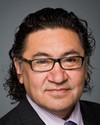As for who leads discussions and collaborative efforts within the federal government, I would answer that the responsibility is really shared, in light of the diversity of mandates. For instance, we asked the Department of Justice to take the initiative in developing a strategy for the $25-million investment over 5 years concerning the women who have been murdered or have disappeared. For its part, the Public Health Agency of Canada coordinates the government's efforts to eliminate family violence. Of course, one aspect of that violence is that it involves women and children.
As you mentioned, and I think it is important, Status of Women Canada plays an important role as a knowledge broker. For our part, we have taken the initiative in that it is through our efforts that the necessary contributions were brought together to allow the various federal departments, through our publications, to better understand the reality of women in general, but also the reality aboriginal women face.
The following example concerns a very timely, emerging topic, not only throughout Canada, but internationally as well. Increasingly, the involvement of men and boys is being discussed. When it is promoted, it is considered to be a fundamental aspect, especially in aboriginal communities. We favour a holistic approach to preventing violence. At Status of Women Canada, we took the initiative to enable our colleagues to better understand the issues. In the context of the White Ribbon Campaign, we prepared a background document which described the problem, explained it, and allowed the departments to determine where they could intervene.





